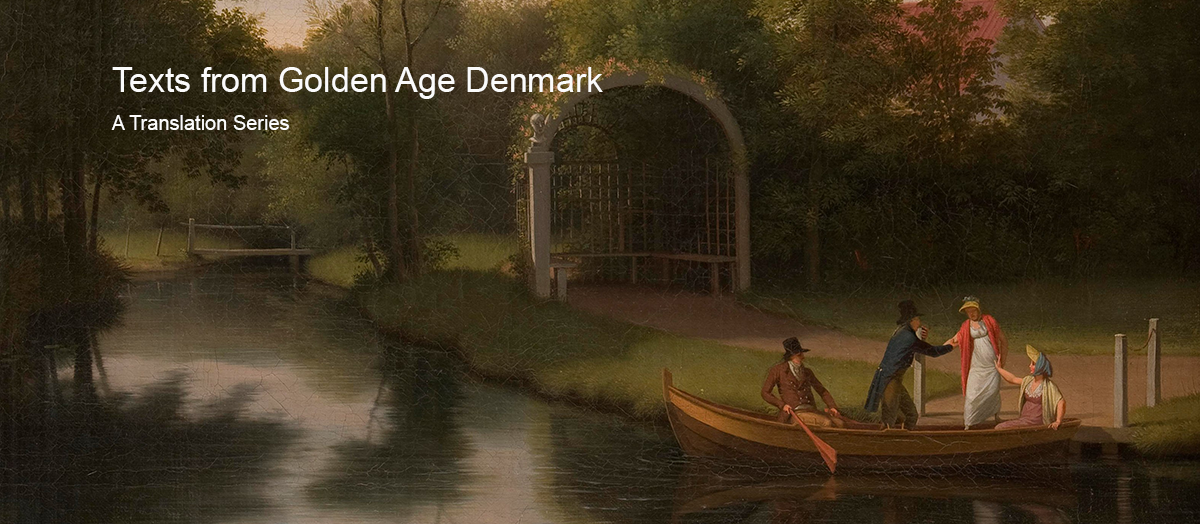
| The
Danish Golden Age Due to numerous translations, Søren Kierkegaard and Hans Christian Andersen have long been familiar names in the anglophone world. However, as is well known inside Denmark, Kierkegaard and Andersen were not isolated figures in the Danish intellectual and artistic scene of the day; rather, they were merely the best-known representatives of an extremely rich period in Danish cultural life that began at the start of the nineteenth century and continued for some fifty or sixty years. This period, which has been designated "the Golden Age of Denmark," is only now coming to be appreciated for its full significance. The Series In order to meet the need for the new international interest in this period, Brill Publishing is producing a translation series entitled,Texts from Golden Age Denmark (ISSN: 1903-3336). The main goal of his interdisciplinary series is to make available for the first time in English some of the most important texts from the leading writers and intellectual figures of this period. The texts featured come from many different authors, representing many different fields, e.g., literature, philosophy, theology, drama and art history. They serve to paint a more complete picture of the cultural milieu of the period and to make its rich intellectual life available to the world of international scholarship. This series is intended in part to provide a new wealth of textual sources for studies featured in the parallel monograph series, Danish Golden Age Studies. The Principles In addition to the translations themselves, the volumes in this series include both a general introduction that serves the function of introducing the specific figures and texts, and locating them within the period. Each volume also includes extensive explanatory notes or commentaries, which supply additional background information about specific aspects of the featured texts. One of the goals of the series is to present the texts as a contemporary reader might have read them. Therefore, all of the translations have been made using the original printings and first editions of the various articles and monographs. |
The General Editor of Texts from Golden Age Denmark is Jon Stewart.
Editorial Board: Finn Gredal Jensen, Mads Sohl Jessen, Nathaniel Kramer, and Katalin Nun Stewart
Reviews
"Stewart has taken great care in positioning each of the chosen texts in their historical as well as philosophical context, and the reader necessarily
comes away having been given a privileged window into a central concern of the Danish Golden Age. These volumes...function as gateways to further
research into the Danish Golden Age and its historical and cultural moment."
Scandinavian Studies, vol. 80, no. 2, 2008, pp. 254-256.
"This series represents a welcome expansion of the excellent work done at the Søren Kierkegaard Research Centre, which here once again cements its competence
in the theological and philosophical literature of the Danish Golden Age....For the first time it is possible for the English reader to look beyond Kierkegaard out into the
wider landscape of outstanding texts from Danish philosophy....The present reviewer...can...only recommend these...excellent volumes of translations to the English
reader. They open up a new world of possibilities for Kierkegaard research, but this is ultimately only a small part of what they really offer. With them the road is
cleared into the treasure chest of wonderful philosophical texts from the Danish Golden Age."
Søren Kierkegaard Newsletter, no. 51, 2007, pp. 43-45.
Previously Published Volumes
Translated and Edited by Jon Stewart
Date of Publication: 2005
Hardback.
xxii+467pp. ISBN 978-87-635-3084-2
Heiberg's Text
This
volume presents one of the philosophical classics of the
Danish Golden Age: Johan Ludvig Heiberg's On
the Significance of Philosophy for the Present Age,
a text which appeared at C.A. Reitzel's Publishing House in
1833. In this work Heiberg gives his impassioned diagnosis
of what he perceived as the great crisis of relativism and
nihilism of his day. His proposed solution is that thinkers,
artists and scholars should take refuge in Hegel's
philosophy, which restores truth and beauty to their proper
place.
The Critical Reaction
With
his provocative claims about the status of religion in the
present age, Heiberg evoked the ire of a number of
Copenhagen's leading theologians, including Jakob Peter
Mynster, who a year later was to become Bishop of Zealand.
This volume includes several reviews of Heiberg's work and
his responses to them.
Heiberg and Hegel
This
volume also contains a translation of Heiberg's
"Autobiographical Fragments," in which he recounts his trip
to Berlin where he met Hegel in person and attended his
lectures. It is here that Heiberg gives the dramatic account
of his philosophical revelation and conversion to Hegel's
philosophy.
This volume offers an
excellent introduction to Heiberg's thought and to the
philosophy of the Golden Age.

Translated and Edited by Jon Stewart
Date of Publication: 2006
Hardback.
xviii+387pp. ISBN 978-87-635-3091-0
Heiberg's Text
This
volume features Johan Ludvig Heiberg's most extensive work
on logic, namely, his Outline
of the Philosophy of Philosophy or Speculative Logic
from 1832. This work was originally used as a textbook for
Heiberg's students at the Royal Military College.
Heiberg and Hegel's Science
of Logic
It
follows closely Hegel's main statement on the subject, the Science
of Logic. Heiberg's work foreshadows a number of
later Danish discussions about issues related to Hegel's
logic, for example, the question of a presuppositionless
beginning, the issue of mediation, the validity of the law
of excluded middle, and finally the relation of philosophy
to religion.
Heiberg's Speculative
Logic was the first of a series of Danish works and
commentaries
on Hegel's Science of
Logic that appeared throughout the late 1830s and
1840s.
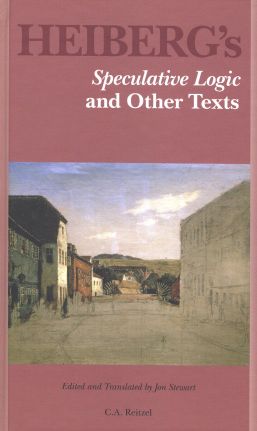
Translated and Edited by Jon Stewart
Date of Publication: 2007
Hardback. xviii+334pp. ISBN 978-87-635-3085-9
Heiberg's Text
This
volume features one of Johan Ludvig Heiberg's best
philosophical works, the Introductory
Lecture to the Logic Course, which was originally
given as a lecture in 1834 and then published in 1835.
This work is one of the clearest statement of Heiberg's
Hegelian idealism.
Here
he makes a case for the primacy of philosophy over, for
example, religion or the
natural sciences
by appealing to a theory of categories. Following Hegel's
model, Heiberg places philosophical knowing higher than
religious knowing.
Despite the title
of the work, Heiberg is not concerned solely with logic or
metaphysics. He also treats, for example, philosophy of
language and aesthetics, setting up a cursory taxonomy of
forms of poetry. The text further contains his famous
appeal to "the demand of the age," which was so often the
object of Kierkegaard's satire
in works such as Prefaces
and Stages on
Life's Way.
The Critical Reaction
This
volume also contains the famous review of this work by the
theologian Hans Lassen Martensen. The then young Martensen
had just returned from an extended journey abroad during
which he met a number of the leading Hegelians of the day.
His
review led to further discussions by the philosophers
Frederik Christian Sibbern and Rasmus Nielsen as well as
Søren Kierkegaard. These critical debates, which are also
included here, focus primarily on the relation of
philosophy to religion.
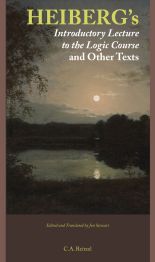
Translated and Edited by Jon Stewart
Date of Publication: 2008
Hardback. xvi+457pp. ISBN 978-87-635-1099-8
Inspired by G.W.F. Hegel’s system, Johan Ludvig Heiberg
authored a series of essays and monographs on different
philosophical issues in both Danish and German; these works
began after his famous encounter with Hegel in Berlin in
1824 and continued for the next two decades.
The present volume features Heiberg’s early work, Contingency
Regarded from the Point of View of Logic (1825), which
represents a pseudoHegelian account of the categories of
contingency and necessity. Two years later Heiberg published
a sequel to this treatise, entitled, “Nemesis. A
Popular-Philosophical Investigation.” This work attempts to
demonstrate that even though we today no longer believe in
Nemesis as a goddess who has control over our lives,
nevertheless we very often make use of the concept of
nemesis without knowing it.
The present volume also includes several other philosophical
and literary articles primarily from Heiberg’s journal Kjøbenhavns
flyvende Post. These articles, which date from between
1825 and 1843, serve as a useful introduction to the
different aspects of Heiberg’s philosophical thinking and
supplement his more extensive monographs in this field.
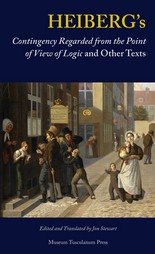
Translated and Edited by Jon Stewart
Date of Publication: 2009
Hardback. xvi+683pp. ISBN 978-87-635-3096-5
In the 1830s this highly controversial theory was attacked by a number of philosophers in Germany and Prussia. These debates spilled over into Denmark in the late 1830s and early 1840s and represent one of the signal episodes in the Danish Hegel reception.
The present volume includes the main texts in this controversy. The debate proper was initiated by the article “Rationalism, Supernaturalism” by the theologian Jakob Peter Mynster, who attacked Hegel’s criticism of the law of excluded middle. The poet, Johan Ludvig Heiberg and the then young theologian, Hans Lassen Martensen then came to Hegel’s defense with articles which responded to Mynster’s charges.
Other interlocutors in the discussion were the philosopher, Frederik Christian Sibbern, and the religious writer, Søren Kierkegaard. There can be no doubt that Kierkegaard’s frequent critical discussions of mediation throughout his authorship were significantly influenced by these debates.
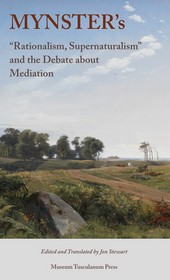
Translated and Edited by Jon Stewart
Date of Publication: 2011
Hardback. xiii+406pp. ISBN 978-87-635-3170-2
Although Heiberg’s Hegelian review only appeared in two issues in 1837 and 1838, it was widely read and discussed among Danish students and intellectuals of the time. It was reviewed at length by the philosopher Frederik Christian Sibbern and satirized by Søren Kierkegaard in Prefaces. There can be no doubt that Heiberg’s Perseus represents a landmark in Golden Age culture.
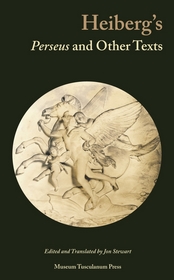
Translated and Edited by Jon Stewart
Date of Publication: 2018
Hardback. xvi+454pp. ISBN 978-87-635-4598-3
One of Denmark’s greatest philosophers during its greatest philosophical period, Frederik Christian Sibbern (1785-1872) was a major figure on the landscape of the Danish Golden Age. Profoundly influenced by German philosophy, he was personally acquainted with figures such as Fichte, Schleiermacher, Goethe and Schelling. Sibbern had long been interested in the philosophy of G.W.F. Hegel but had never written any extended analysis of it.
When Johan Ludvig Heiberg unveiled his new philosophical journal Perseus in 1837, as a part of his Hegelian campaign, he provided Sibbern with the occasion that he had been waiting for. In a series of eight installments in the journal, Maanedsskrift for Litteratur, Sibbern published an extensive critical account of Hegel’s philosophy under the guise of a review of the first volume of Heiberg’s Perseus. In the fall of 1838 he collected the first four installments of this review and published them as an independent monograph entitled, Remarks and Investigations Primarily Concerning Hegel’s Philosophy.
This work represents arguably the most exhaustive, detailed and profound analysis of Hegel’s philosophy ever to appear in the Danish language, anticipating many aspects of Kierkegaard’s famous criticism. With the present volume Sibbern appears in English for the first time. Now international readers can catch a glimpse of this towering philosophical genius and gain a deeper appreciation for the significance of his contributions to Golden Age Denmark.
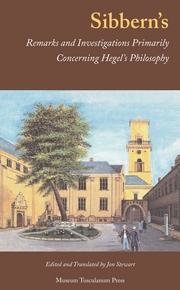
The series Danish Golden Age Studies is published by
See also the monograph series
Jon Stewart©2007-2021